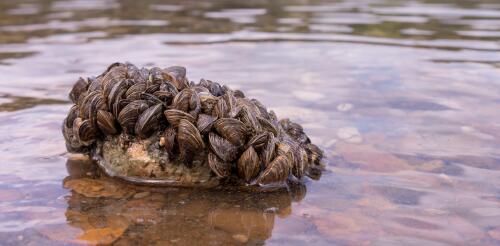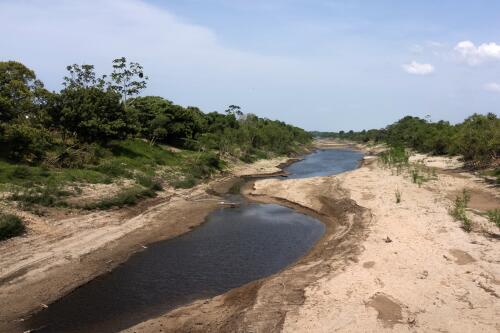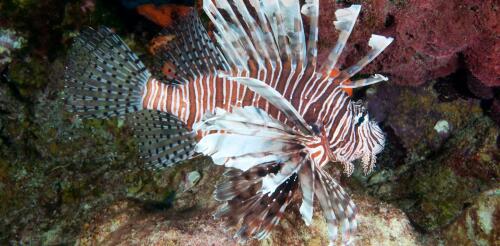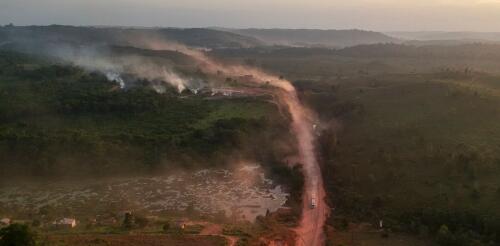Brazil
Invasive species – including plants, animals and fish – cause heavy damage to crops, wildlife and human health worldwide. Some prey on native species; other out-compete them for space and food or spread disease. A new United Nations report estimates the losses generated by invasives at more than US$423 billion yearly and shows that these damages have at least quadrupled in every decade since 1970. Humans regularly move animals, plants and other living species from their home areas to new locations, either accidentally or on purpose. For example, they may import plants from faraway locations to raise as crops or bring in a nonnative animal to prey on a local pest. Other invasives hitch rides in cargo or ships’ ballast water. When a species that is not native to a particular area becomes established there, reproducing quickly and causing harm, it has become invasive. These recent articles from The Conversation describe how several invasive species are causing eco...
The record drought in the Brazilian Amazon in 2023 was caused by climate change, Azernews reports, citing foreign media outlets. This conclusion was reached by an international team of scientists from the Center for the Study of Weather Phenomena World Weather Attribution (WWA). “The main cause of the record drought in 2023 in the Amazonian region of Brazil was climate change caused by human activity,” says the report posted on the organization’s website. According to scientists, the influence of the El Nino phenomenon on the weather in the Amazon basin turned out to be much weaker than experts had expected. “Climate change leads to an increase in temperature and a decrease in precipitation. These factors increased the probability of an unprecedented drought in 2023 by 30 times compared to a situation in which the only factor influencing the weather would be El Nino,” the authors of the study note. Meteorologists f...
The story of renewable energy’s rapid rise in Latin America often focuses on Chinese influence, and for good reason. China’s government, banks and companies have propelled the continent’s energy transition, with about 90% of all wind and solar technologies installed there produced by Chinese companies. China’s State Grid now controls over half of Chile’s regulated energy distribution, enough to raise concerns in the Chilean government. China has also become a major investor in Latin America’s critical minerals sector, a treasure trove of lithium, nickel, cobalt and rare earth elements that are crucial for developing electric vehicles, wind turbines and defense technologies. In 2018, the Chinese company Tianqi Lithium purchased a 23% share in one of Chile’s largest lithium producers, Sociedad Química y Minera. More recently, in 2022, Ganfeng Lithium bought a major evaporative lithium project in Argentina for US$962 million. In April...
Brazil’s coastal waters teem with a rich array of species that paint a living tapestry beneath the waves. This underwater world is particularly special because many of its species are endemic – they are found nowhere else on Earth. The southwestern Atlantic is home to 111 endemic reef fish species, each of which plays a crucial role in the intricate web of marine life. An uninvited guest has arrived in these tropical waters: the Pacific red lionfish (Pterois volitans). Renowned for its stunning appearance and voracious appetite, the lionfish was first detected off of Florida in 1985 and has spread throughout the Caribbean, killing reef fish in large numbers. Now it has breached a formidable obstacle: the Amazon-Orinoco river plume, which flows into the Atlantic from northeastern Brazil. This massive discharge of fresh water has long functioned as a barrier separating Caribbean fish species from those farther south along Brazil’s coastline. Scientists and env...
Conservationists breathed a sigh of relief when Luiz Inácio Lula da Silva won Brazil’s presidential election in the fall of 2022. His predecessor, Jair Bolsonaro, had opened large parts of the Amazon region to business by crippling enforcement of environmental laws and turning a blind eye to land grabbing. It should come as no surprise that deforestation showed a sharp uptick. However, while Lula oversaw a more than 70% drop in deforestation during his first run as president in the early 2000s, the rainforest’s future remains deeply uncertain. That’s in part because Brazilian administrations, whether of the right or left, have all promoted an ambitious project to boost exports and the economy called the Initiative for the Integration of the Regional Infrastructure of South America, or IIRSA. The initiative focuses on new roads, dams and industry that can threaten the region’s fragile rainforest ecosystem – and harm the world’s climate i...




